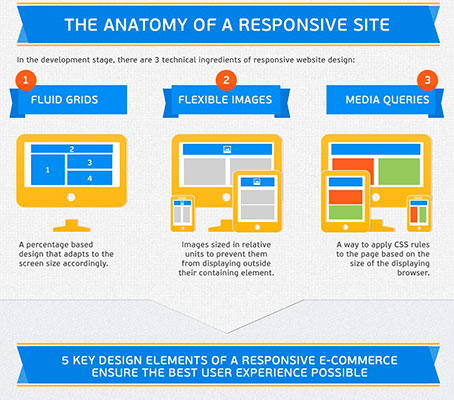Core Principles Of Internet Site Layout: Recommendations For Crafting A User-Friendly Online Existence
Core Principles Of Internet Site Layout: Recommendations For Crafting A User-Friendly Online Existence
Blog Article
Write-Up By-Crews Skinner
When it involves internet site style, making sure user-friendliness is crucial. From responsive layout to structured navigating, every element plays an important function in producing a website that accommodates your audience's demands. Yet what about the finer details that can make or damage a customer's searching experience? Keep tuned as we discover some often-overlooked suggestions that can raise your website's usability to the next level, making it absolutely stand out in the electronic landscape.
Relevance of Responsive Layout
Receptive style is an important aspect of modern-day web site development. Ensuring your site is receptive ways that it can adjust to various display sizes and tools, offering a smooth experience for users.
With the increasing use of mobile phones and tablet computers to access the web, having a responsive design is necessary for getting to a bigger target market. It assists in boosting user experience by making your site very easy to browse and read on any gadget.
In addition, receptive style can favorably influence your internet search engine rankings, as internet search engine like Google focus on mobile-friendly internet sites. By having a receptive layout, you're likewise future-proofing your web site, as brand-new tools with varying screen sizes remain to arise.
Simplify Navigation Framework
To boost customer experience and assist in easy access to details on your internet site, enhancing the navigating structure is paramount. When designing your website, focus on developing a clear and user-friendly navigating menu that helps site visitors locate what they're seeking rapidly.
Limit the number of food selection things to the fundamentals, grouping associated web pages with each other to stay clear of overwhelming customers. Use search engine optimization pricing that plainly indicate the web content of each page, making it much easier for customers to comprehend where each web link will certainly take them.
Consider applying dropdown menus for subcategories to prevent cluttering the major navigating bar. Additionally, include a search bar plainly on the page for users that prefer looking for particular information.
Prioritize mobile responsiveness in your navigating layout to make certain simple access on all tools.
Optimize Web Page Lots Rate
Improving page load speed is important for maintaining site visitors on your website. Slow-loading pages annoy customers and can result in high bounce rates. To enhance page tons speed, start by maximizing photos. Press images without jeopardizing high quality to minimize their file sizes.
In addition, enable browser caching to save often accessed sources in your area, accelerating load times for returning site visitors. source website , JavaScript, and HTML documents by getting rid of unnecessary personalities, comments, and formatting, enhancing load speed.
Take into consideration using a web content distribution network (CDN) to disperse your internet site's material across numerous servers worldwide, reducing latency for customers accessing your website from different locations. Finally, restrict the use of third-party scripts and plugins, as they can significantly affect tons times.
Final thought
Finally, by integrating receptive style, streamlining navigation, and optimizing page lots rate, you can produce a straightforward website that interest a broader target market and enhances user experience. These essential elements ensure that site visitors can easily access and navigate your website throughout different gadgets, resulting in increased involvement and satisfaction. By concentrating on these crucial facets, you can construct an effective site that maintains customers returning for even more.
